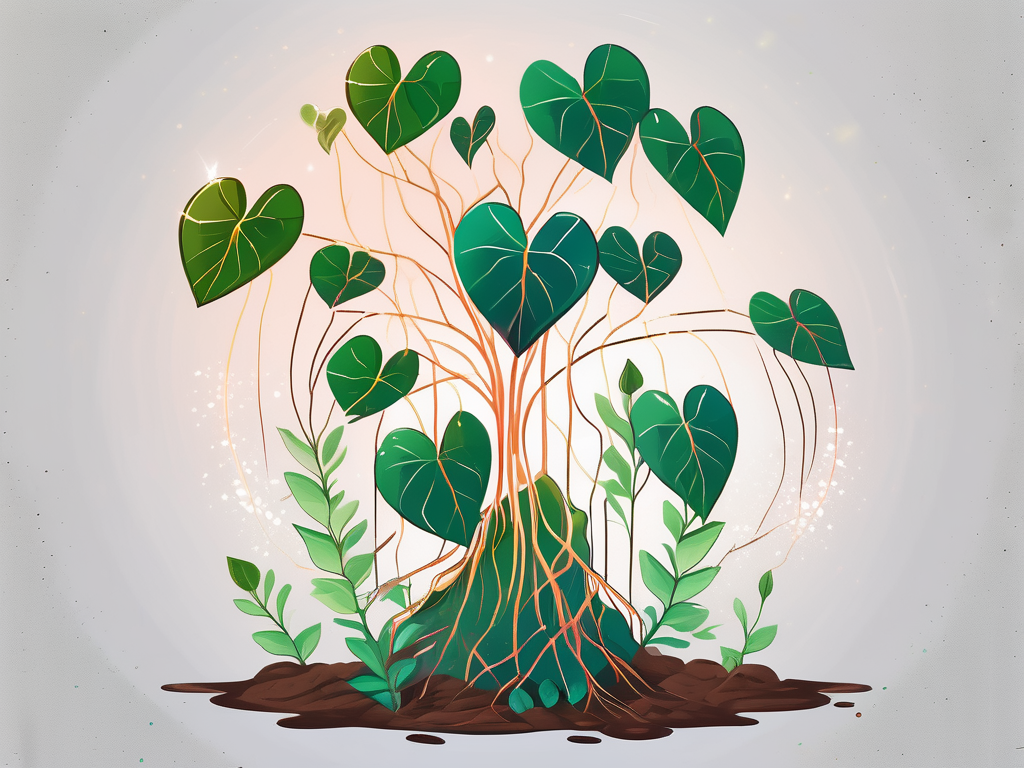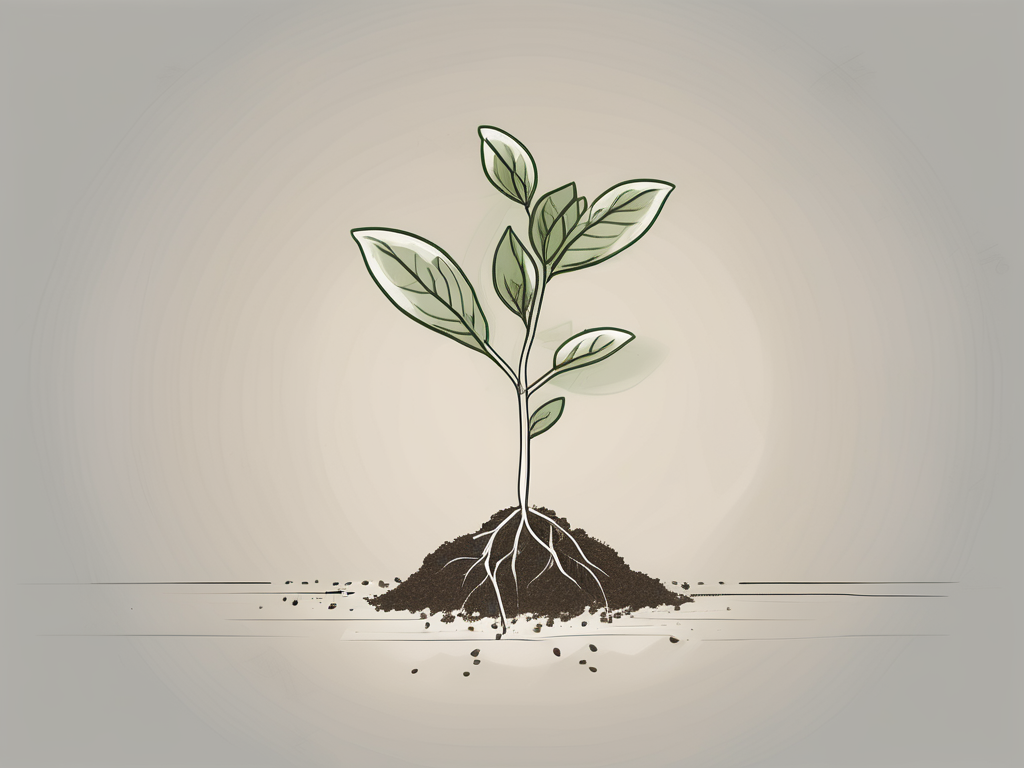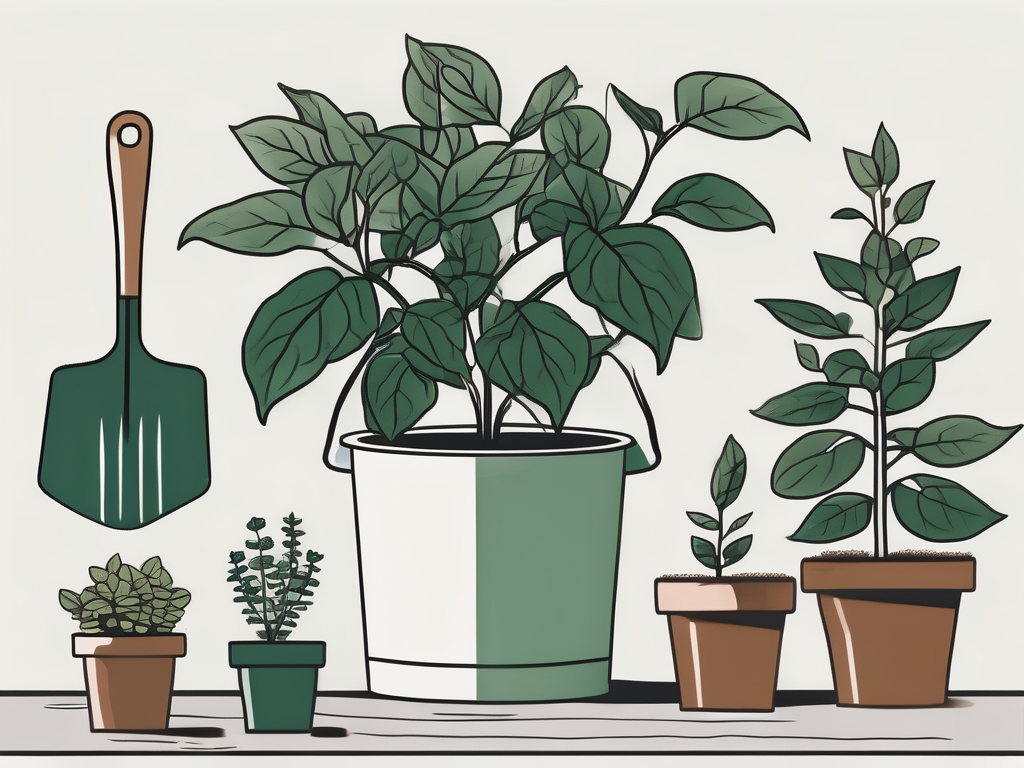
Rhaphidophora is a plant that might not be the first to catch your eye in a nursery, but once you discover its charm, you'll understand why it's often called nature's hidden gem. With its lush foliage and unique climbing habit, this plant has gained popularity among plant lovers for its beauty and versatility.
In this post, we're going to explore the incredible benefits of having a Rhaphidophora in your home. From its air-purifying qualities to the aesthetic appeal it brings to any space, we'll cover everything you need to know about this remarkable plant. So, whether you're a seasoned plant parent or just starting your journey, you'll find something valuable here.
Getting to Know the Rhaphidophora
The Rhaphidophora is often confused with its more famous relative, the Monstera. However, once you get to know it, you'll find that this plant has its own special characteristics. The most common species is Rhaphidophora tetrasperma, also known as the mini Monstera, which is beloved for its split leaves that resemble those of its larger cousin, but in a more compact form.
Native to Southeast Asia, Rhaphidophora thrives in a warm, humid environment. This makes it an excellent houseplant, especially if you can provide it with a little extra humidity. If you're looking for a plant that can adapt to different light conditions and forgive the occasional forgotten watering, this one might just be your new best friend.
Interestingly enough, Rhaphidophora is a climbing plant. In its natural habitat, it uses aerial roots to climb up trees, reaching for the sunlight. In your home, it will appreciate a moss pole or trellis to support its upward journey. This climbing nature not only adds an interesting dynamic to its growth but also makes it a versatile addition to any room.
So, if you're considering adding a Rhaphidophora to your collection, you're in for a treat. It's not just a beautiful plant, but also one that's relatively easy to care for, making it a great choice for both new and experienced plant people.
Air Purifying Qualities
Many people love houseplants for their ability to improve indoor air quality, and Rhaphidophora is no exception. While it's not as famous as some other plants for its air-purifying abilities, it does contribute to a healthier home environment.
Like other green plants, Rhaphidophora absorbs carbon dioxide and releases oxygen during photosynthesis. This process can help increase oxygen levels in your home, creating a fresher atmosphere. Additionally, Rhaphidophora helps filter out common household toxins such as formaldehyde and benzene, which can be found in things like cleaning products, furniture, and cigarette smoke.
While it's hard to say for sure how much of an impact a single plant can have, adding a Rhaphidophora—or several—to your home certainly won't hurt. If you're looking to create a more breathable indoor environment, consider clustering a few plants together. This can amplify their air-purifying effects and create a lush, inviting space.
So, not only does Rhaphidophora enhance the aesthetic of your home, but it also contributes to a healthier living space. It's a win-win situation for anyone looking to improve their indoor environment naturally.
Aesthetic Appeal and Design Versatility
One of the most significant benefits of the Rhaphidophora is its aesthetic appeal. With its attractive split leaves and vibrant green color, it can easily become the centerpiece of any room. Whether you prefer a minimalist look or a jungle-like atmosphere, Rhaphidophora fits right in.
Because of its climbing habit, it offers versatility in how you display it. You can let it trail from a hanging basket or encourage it to climb up a trellis or moss pole. Either way, its cascading leaves add a dynamic element to your decor.
If you're looking to create a focal point, consider placing your Rhaphidophora in a room with neutral tones. The green leaves will stand out beautifully against a white or beige background. For a more dramatic effect, pair it with plants that have contrasting leaf shapes or colors.
Another design tip is to use Rhaphidophora to soften the edges of a room. Its trailing habit can break up the straight lines of furniture, adding a more organic feel to your space. This is particularly effective in modern or industrial-style homes, where a touch of greenery can make the atmosphere feel more welcoming.
In summary, Rhaphidophora is not just a plant—it's a design element that can elevate your home's aesthetic in countless ways. Its versatility and beauty make it a fantastic addition to any interior.
Easy Maintenance and Care
Caring for a Rhaphidophora is relatively straightforward, making it an ideal plant for those who are just starting out or for anyone who wants a low-maintenance addition to their collection. Let's go over some basic care tips to keep your plant thriving.
Light: Rhaphidophora prefers bright, indirect light. Direct sunlight can scorch its leaves, so it's best to keep it a few feet away from a window. If your home is on the shadier side, don't worry—this plant can tolerate lower light conditions, though its growth might slow down a bit.
Water: The key to watering Rhaphidophora is consistency. Allow the top inch of soil to dry out between waterings. Overwatering can lead to root rot, which is a common issue with tropical plants. If you're unsure, it's better to underwater slightly than to overdo it.
Humidity: Being a tropical plant, Rhaphidophora loves humidity. If your home is dry, consider using a humidifier or placing a tray of water near the plant to increase moisture in the air. Misting the leaves occasionally can also help, but it's not essential.
Soil: A well-draining potting mix is crucial for Rhaphidophora. You can use a regular houseplant mix with some added perlite or orchid bark to improve drainage. This will help prevent water from sitting in the pot and causing root issues.
With these simple care tips, your Rhaphidophora should thrive and continue to be a beautiful presence in your home.
Propagation: Sharing the Love
If you find yourself falling in love with your Rhaphidophora, why not share the joy with others? Propagation is a rewarding process that allows you to create new plants from your existing one, and it's easier than you might think.
Rhaphidophora is most commonly propagated through stem cuttings. Here's a step-by-step guide to help you get started:
- Choose a healthy stem with at least one node (the bump where leaves and roots emerge).
- Using a clean, sharp knife or scissors, cut the stem just below the node.
- Remove any leaves near the cut end to prevent them from rotting in water.
- Place the cutting in a glass of water, ensuring the node is submerged.
- Change the water every few days to keep it fresh and free of bacteria.
- After a few weeks, roots should start to form. Once they're a few inches long, you can plant the cutting in soil.
Propagation not only allows you to expand your collection but also makes for a thoughtful gift. Sharing a plant you've propagated yourself adds a personal touch that any plant lover will appreciate.
Dealing with Common Pests
Like all houseplants, Rhaphidophora can sometimes attract unwanted pests. The most common culprits are spider mites and mealybugs, which can be a nuisance but are manageable with some proactive care.
Spider Mites: These tiny pests thrive in dry conditions, so increasing humidity can help keep them at bay. If you notice fine webbing on the leaves, it's a sign of an infestation. A gentle wash with water or a solution of water and mild soap can help remove them. You might need to repeat this process a few times to ensure they're gone.
Mealybugs: These pests appear as small, white, cottony masses on the plant. They're often found in the crevices of leaves and stems. To remove them, dip a cotton swab in rubbing alcohol and gently wipe the affected areas. Regularly checking your plant can help catch infestations early before they spread.
Keeping your Rhaphidophora healthy and stress-free is the best way to prevent pests. This means providing adequate light, water, and humidity, as well as regularly cleaning the leaves to remove dust and debris.
Fungal Issues: Prevention and Treatment
Fungal issues can also affect Rhaphidophora, especially if the plant is kept in conditions that are too damp. Overwatering and poor air circulation are common culprits, so it's essential to monitor these factors closely.
Root Rot: This fungal disease is caused by overwatering and can be deadly if not addressed. Signs include yellowing leaves and a mushy stem. If you suspect root rot, remove the plant from its pot, trim away any rotten roots, and repot it in fresh, dry soil.
Leaf Spot: This is characterized by brown or black spots on the leaves. It's often caused by water sitting on the leaves for too long. To prevent leaf spot, water the soil directly and avoid getting the leaves wet. If spots do appear, remove the affected leaves to prevent the spread of the fungus.
Maintaining a good watering schedule and ensuring your plant has adequate air circulation can go a long way in preventing fungal issues. If problems arise, acting quickly can help save your plant from further damage.
Creating a Beautiful, Plant-Filled Space
Incorporating Rhaphidophora into your home isn't just about having a plant—it's about creating an environment that feels alive and vibrant. Here are some ideas to help you design a space that's both beautiful and functional:
- Vertical Gardens: Use Rhaphidophora's climbing ability to your advantage by creating a vertical garden. This can be done with a trellis or wall-mounted planters, adding dimension and greenery to your walls.
- Mix and Match: Pair Rhaphidophora with other plants to create a diverse and textured display. Consider using plants with different leaf shapes and colors for contrast.
- Layered Heights: Use stands or hanging baskets to vary the height of your plants. This creates a sense of depth and interest, making your plant collection a focal point in the room.
By thoughtfully arranging your Rhaphidophora and other plants, you can transform your home into a sanctuary that reflects your personality and style. It's a journey that encourages creativity and experimentation, resulting in a space that's uniquely yours.
Final Thoughts
Rhaphidophora is truly a hidden gem in the plant world. Its aesthetic appeal, air-purifying qualities, and ease of care make it a valuable addition to any home. Whether you're looking to improve your indoor environment, enhance your decor, or simply enjoy having more greenery around, this plant offers something for everyone.
At Cafe Planta, we're passionate about helping you care for your plants and create beautiful spaces. Whether you're looking for new additions to your collection or need tips on plant care, we're here to help. Feel free to email us or reach out via Instagram. Let's continue to connect with nature and each other through our shared love of plants.












